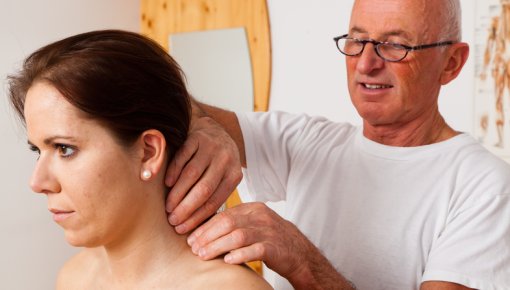Do mobilization or manipulation techniques help relieve neck pain?

Manual therapy techniques applied to the neck or upper back area are used to relieve neck pain in the short term. But there aren't enough good-quality studies to be able to draw any reliable conclusions about the effect of these techniques.
Manipulation and mobilization are manual therapy techniques based on specific skilled hand movements. The aim of these techniques is to relieve pain and improve the mobility of joints. In mobilization, the therapist slowly moves the joint within its normal range of movement. Manipulation therapy, on the other hand, involves using short, sharp movements to push a joint beyond its normal range of movement. This is also known as chiropractic adjustment.
For the treatment of neck pain, manipulation and mobilization techniques can be used on both the neck (cervical spine) and the upper back (thoracic spine). It is important to make sure that the physiotherapist or doctor has had special training in manual therapy.
